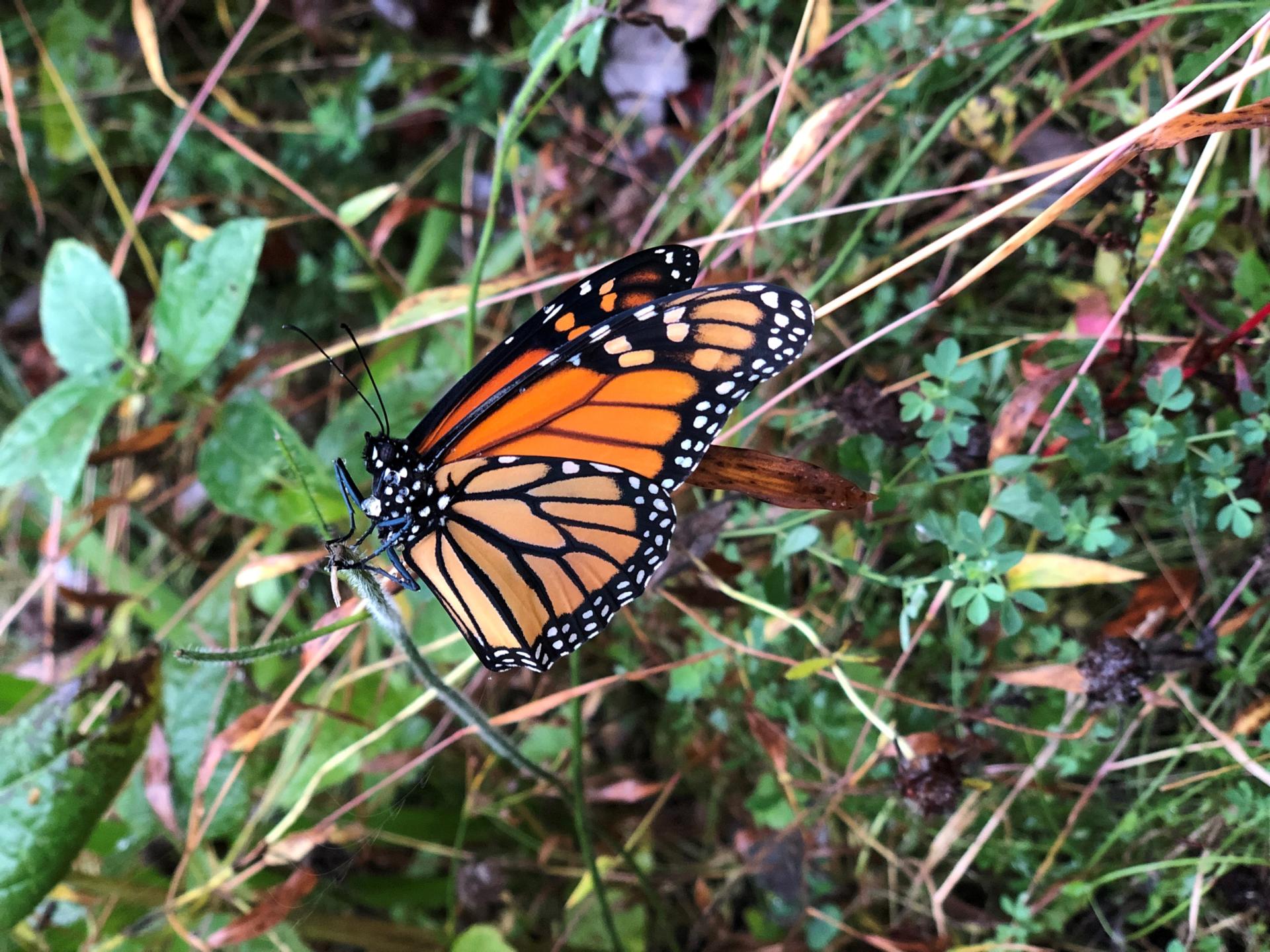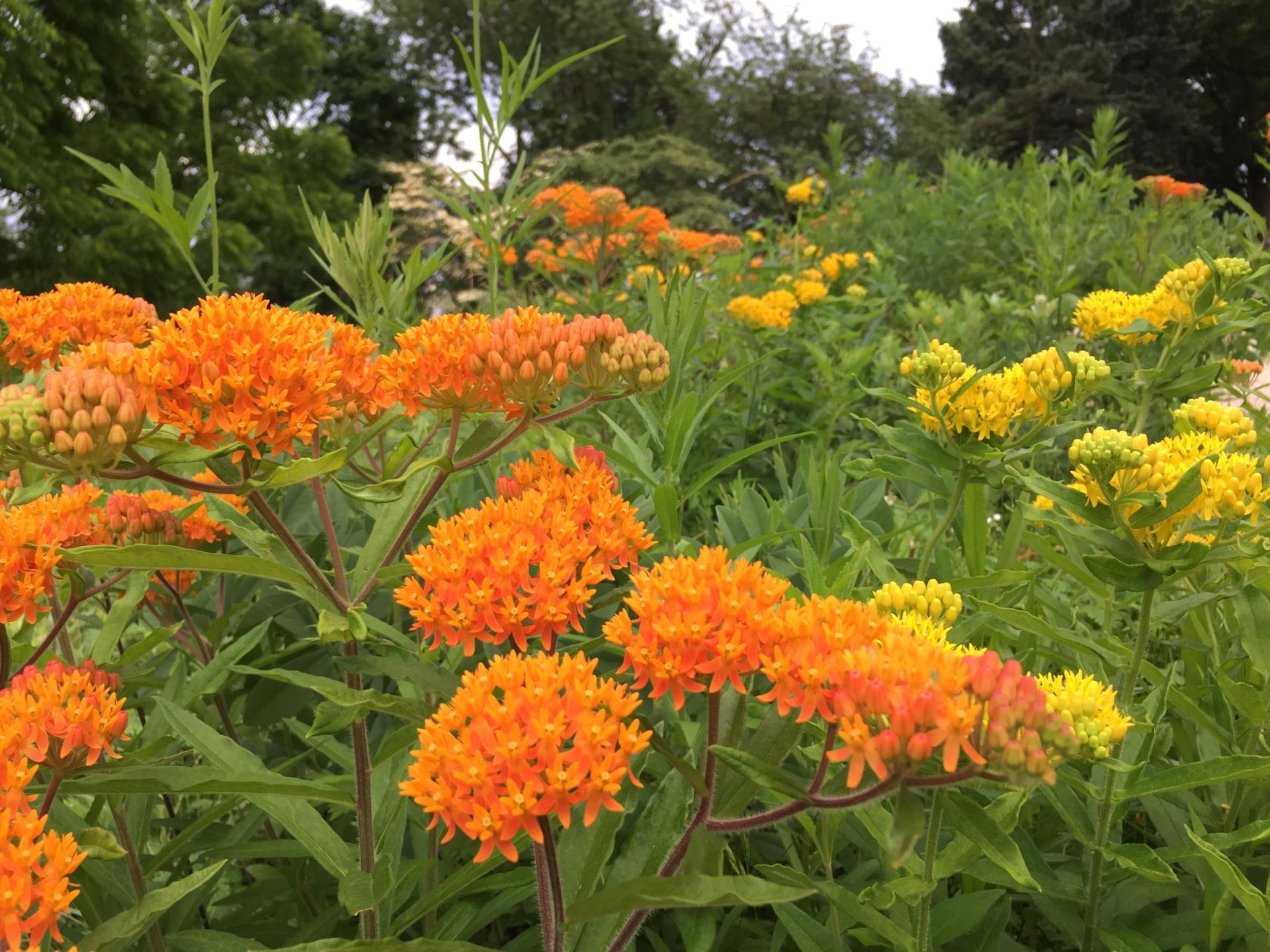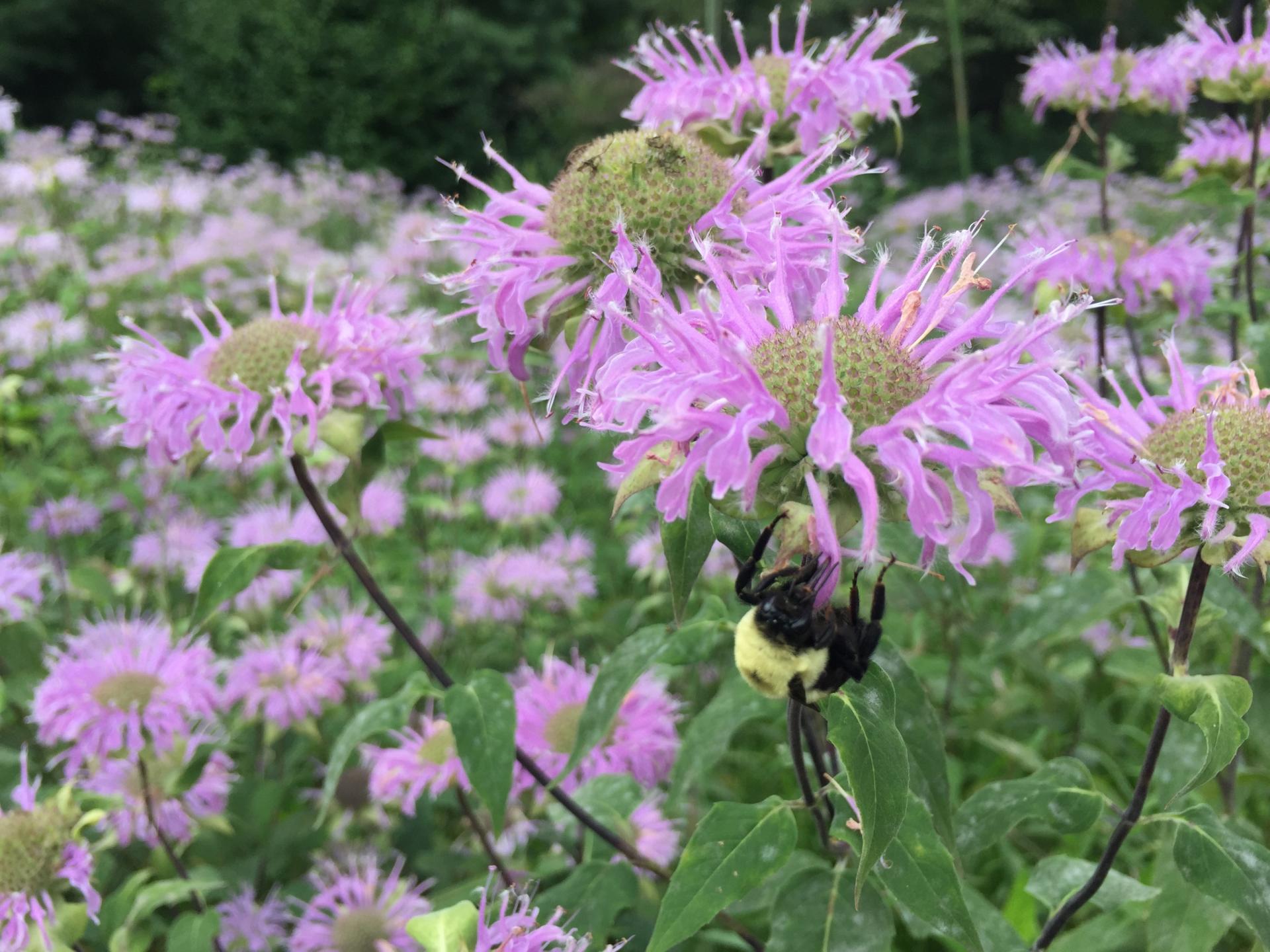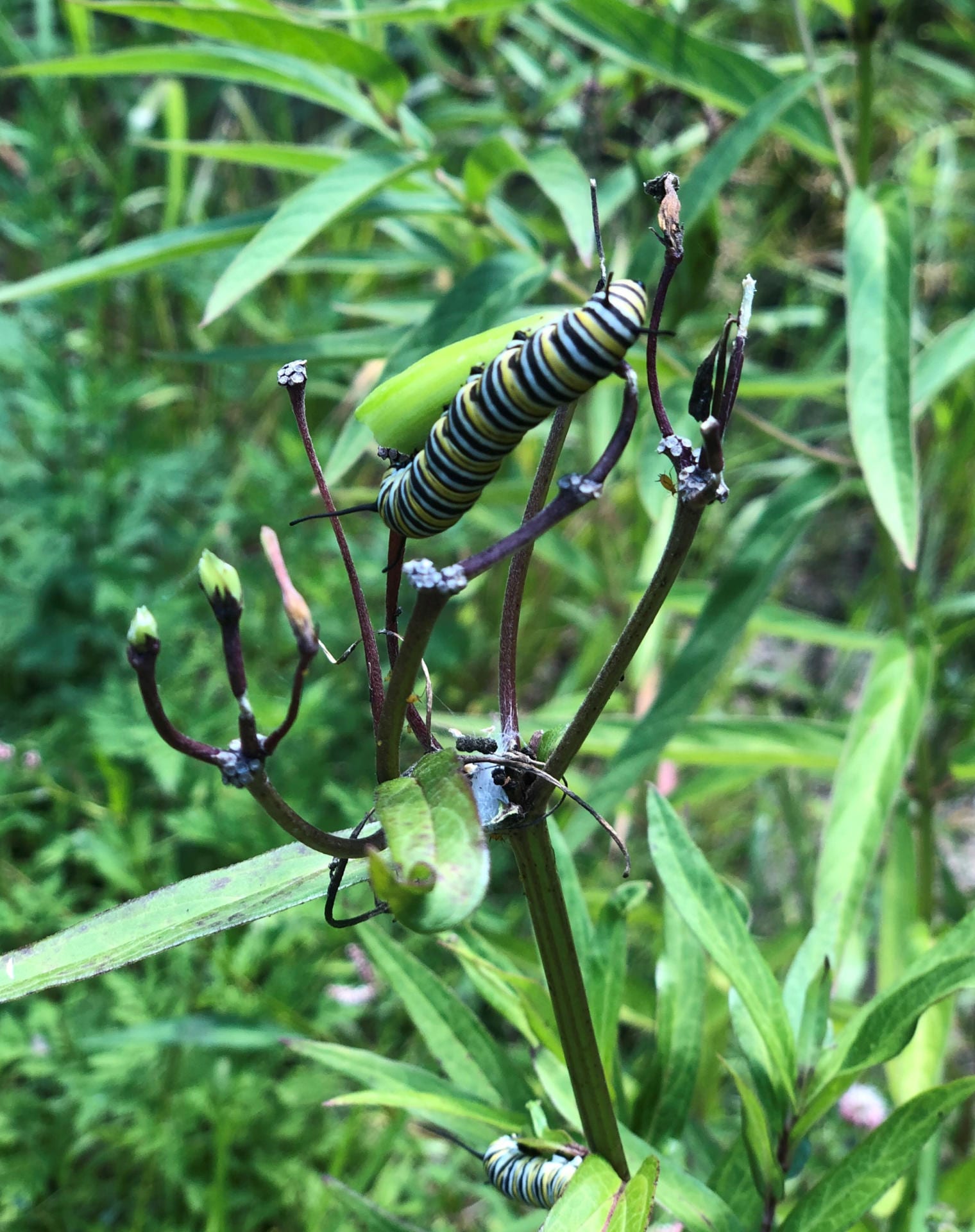by Penn Marchael
Establishing a meadow is difficult; you have to combat chaotic weather forecasts and wait at least three years to see results all while managing clients’ anxiety around whether or not it’s working. The three most important aspects to consider when installing a meadow are site preparation, maintenance, and the seeds and/or plants you choose. Knowing which species typically have the most success in establishment and longevity is a crucial factor in creating a sustainable meadow. Here are the top ten meadow species (from seed) that will make your meadows work.
Little Bluestem (Schizachyrium scoparium)
Grasses are the glue that hold most meadow plant communities together because of their aesthetics, habitat and function. Slow to get going from seed, this well-established species from the mid-west prairies is desirable for any meadow seeding. Little bluestem is a warm season grass that performs best as the weather warms up in mid to late June and thrives with the heat and drought of the summer. This sturdy grass stands erect and is part of the supportive structure that keeps many perennials upright when they might otherwise flop. Little bluestem fosters tremendous potential for habitats; its foliage acts as food for several butterfly/skipper caterpillar species along with grasshoppers. Granivorous birds like quail and sparrows are known to eat its seeds during the winter months. What’s more, little bluestem’s tight clumping bases allow smaller ground birds and rodents to move about and remain hidden from predators. Little bluestem is a great base grass for any meadow mix.
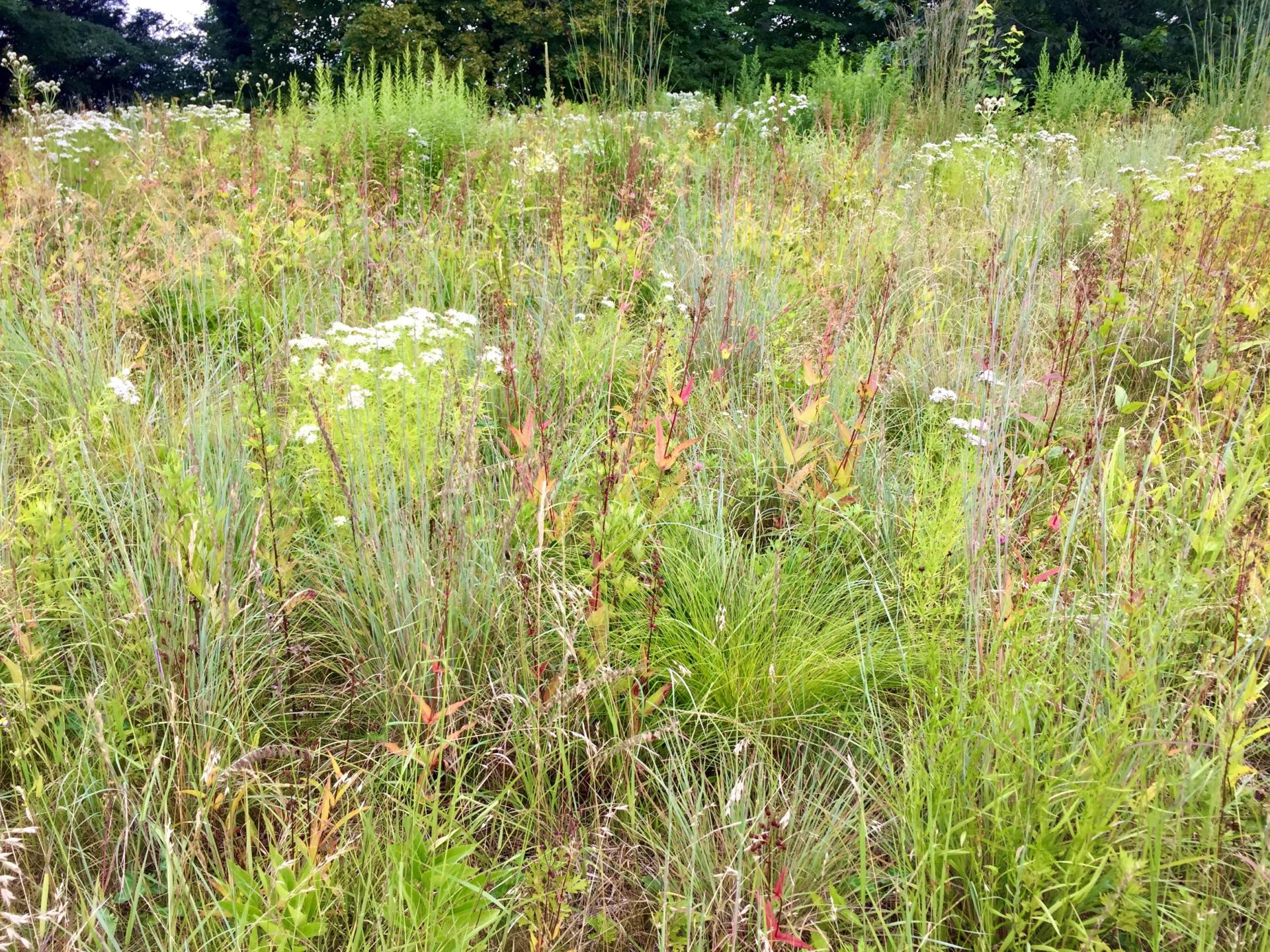
Mixed meadow grasses in this meadow include Schizachyrium scoparium (foreground) and Andropogon gerardii (background).
Big Bluestem (Andropogon gerardii)
Big bluestem is another warm season grass that earns its name for its tall stature and similarly greenish blue leaves. This grass was the primary feature of the tall grass prairies that once dominated the American landscape. Big bluestem grows well with heat and drought and will maintain an average height until mid to late summer when it begins its ascent, towering over other 3 to 4 feet tall plants. Big bluestem offers a great habitat for insects, especially for grasshoppers and caterpillars. The varied size of its stems makes it is an attractive feature for nest building and supporting wildlife. Big bluestem is a favored meal among herbivores like cattle due to its foliage and grain loving birds can also be found tucking in on its seeds as well. While it’s definitely an important ingredient for a successful meadow, big bluestem should be used somewhat more sparingly as it can grow very tall.
Side Oats Grama (Bouteloua curtipendula)
Side oats grama is a warm season grass that stands shorter than little and big bluestems. It has a very identifiable seed head so it can be easily spotted by clients and designers alike. This plant has great versatility in the type of soil it can grow in, germinates quickly, and produces seed the first season of growth. Side oats grama tends to flower and seed earlier in the summer, ahead of the other two grasses mentioned, giving its longevity a competitive edge in a meadow system. This grass is a specialty food source for leafhoppers as well as many other insects. Song and game birds are known to eat the seeds. Early to germinate and there for the long haul, side oats grama is a stable feature of any meadow.
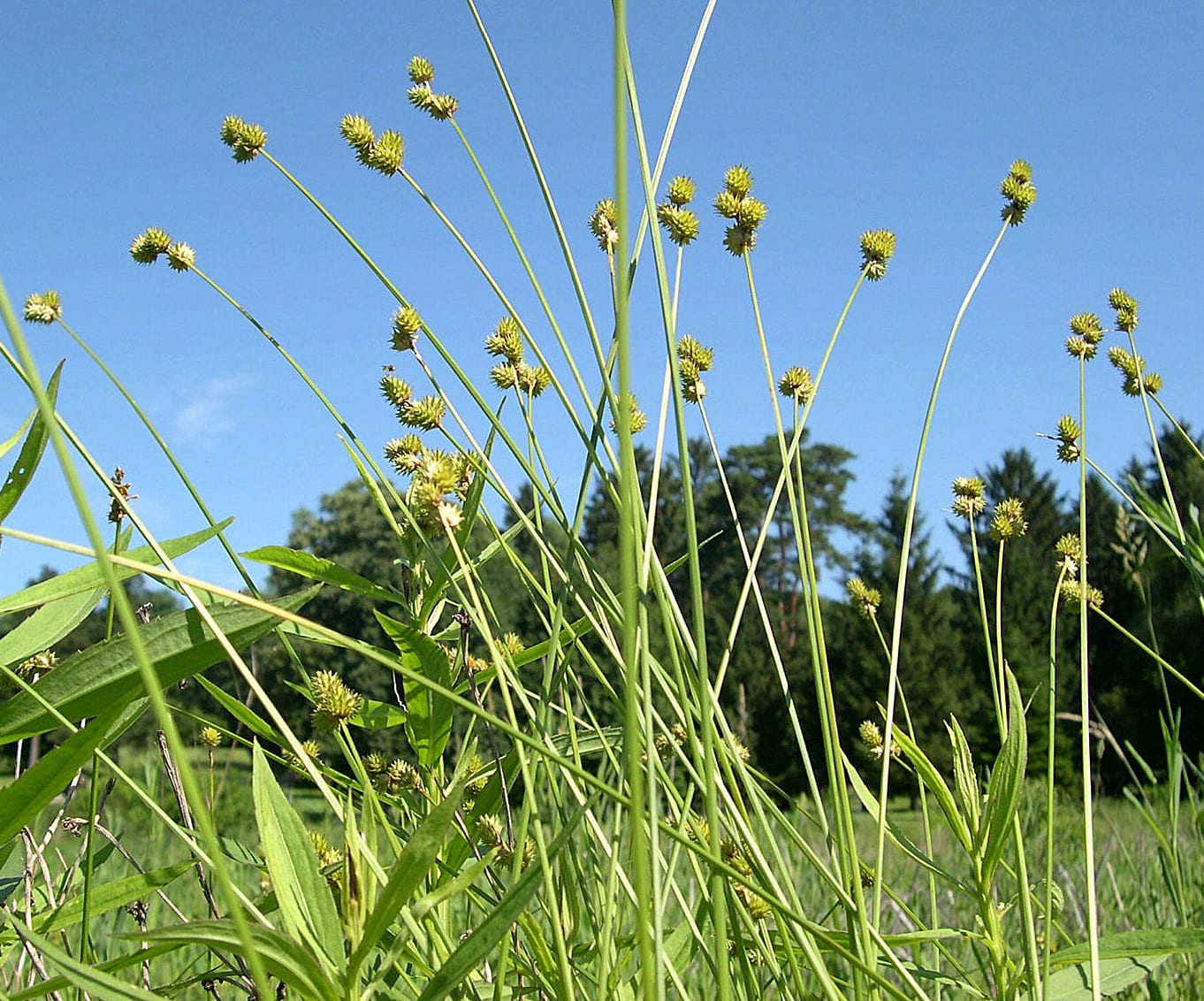
Carex molesta Photo: Jay Sturner
Troublesome Sedge (Carex molesta)
Carex is a cool season plant that falls under the large and diverse umbrella of sedges. On face value, troublesome sedge offers similar aesthetic characteristics, wildlife and habitat attractions, and growth cycles. However, this sedge makes the list for one very important reason: versatility. Its name says it all—it can be troublesome where it’s not wanted, but in an open meadow system this sedge can compete against bigger, badder plants. It can be found growing in all types of soil, from dry sunny upland systems to open wetlands. It is a food source (as are its Carex cousins) for numerous insects, birds, and in some cases, turtles and other herbivores. This plant fills the springtime lull in a meadow and can flourish in slightly damper areas that other species cannot.
Foxglove Beardtongue (Penstemon digitalis)
Foxglove beardtongue is a perennial workhorse in a meadow. It readily and reliably comes from seed and grows all year long, especially in cold months and springtime when other plants are dormant. It is one of the first flowers to bloom in a meadow system in late May or early June, creating large sweeping swaths of pinkish white blooms. Foxglove beardtongue is an important nectar source for many bees and insects that cohabitate meadows. It is a particular favorite among long-tongued bees, due to its flower shape. While bees and other insects are drawn to its nectar, foxglove is not very palatable to herbivores and birds who rarely eat the seeds. It is for this reason that foxglove can can compete over the long life of a meadow. A beautiful flower, foxglove gets people excited for a summer full of meadow blooms.
Butterfly weed (Asclepias tuberosa)
As its namesake implies, butterfly weed is a perennial flower that hosts a number of butterflies and other insects. Not only is its foliage a bountiful food source, the flowers also produce a great nectar source for many insects. Reliable from seed, this plant loves the heat and dry conditions of a meadow. It has a unique root structure that taps into compacted and clay-like soil to establish itself. Butterfly weed blooms earlier in the season and holds onto its seeds in pods until the fall season’s winds scatter them around the meadow, allowing this plant to be a mainstay in the plant community for many years. Its unique bright orange flower (and kaleidoscope of butterflies) makes it an easy-to-spot flower for many people to enjoy.
Wild Quinine (Parthenium integrifolium)
Wild quinine is not a plant that pops into everyone’s mind when they think of a meadow. It readily grows from seed and has a reliably long lifespan in meadow systems. Because of its tap root structure, it grows well in and amongst the fibrous root systems of grasses so that it can readily compete with dominant plants in a meadow. The flowers are really what make this plant a winner; the tight compact white bud-like flowers start blooming in late June and persist until mid to late August. This is a nectar source for a great number of insects, beetles, and wasps. The rigid stem and coarse leather like leaves make it unpalatable to herbivores (contributing to its long life in meadows) and its different stem structure make it a great perch and nesting plant for birds.
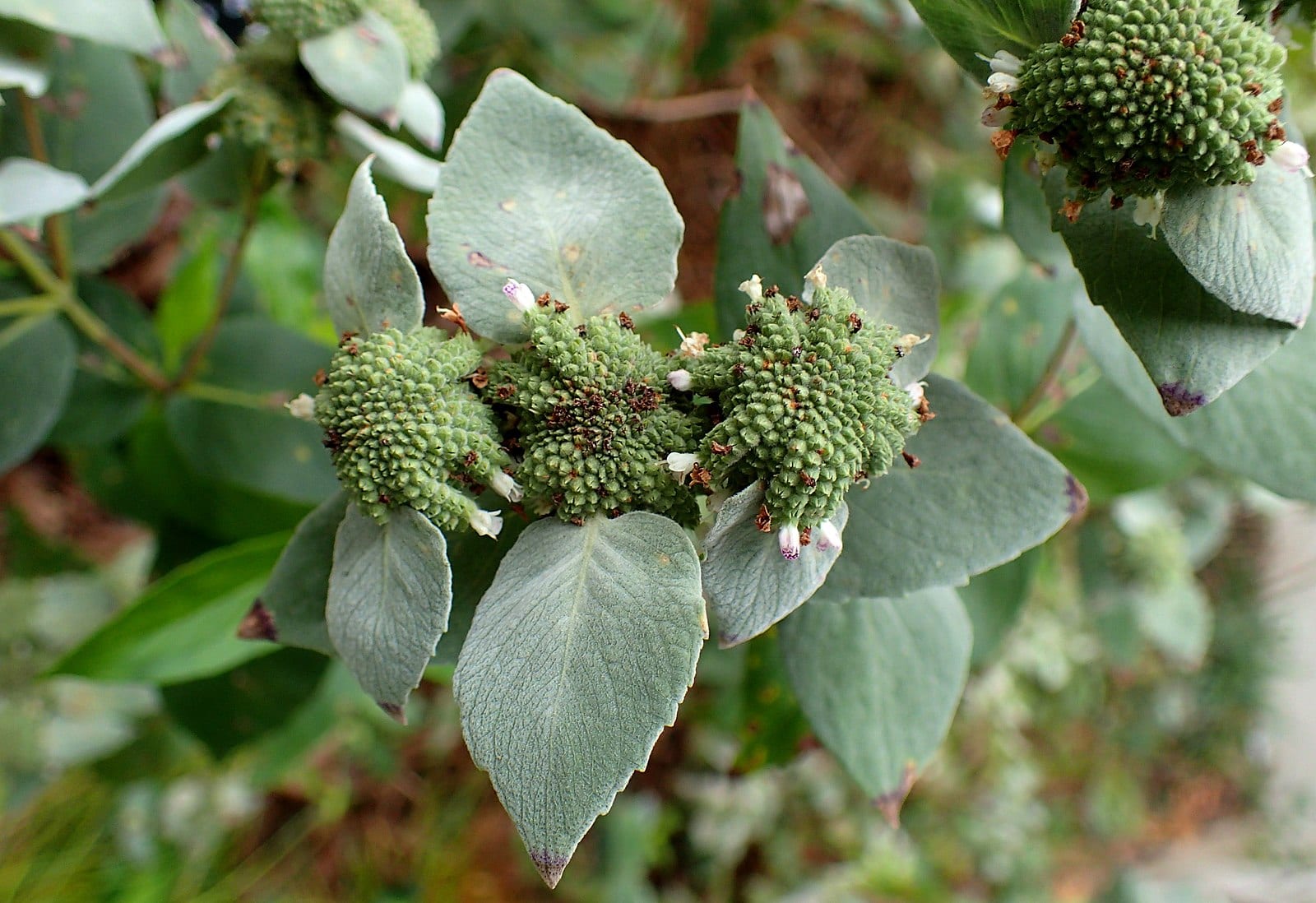
Pycnanthemum muticum Photo: Kenraiz Krzysztof Ziarnek
Mountain Mint (Pycnanthemum muticum)
Mountain mint is arguably one of the best pollinator species in meadow systems for native insects. Native mints have hundreds of densely packed small flowers suited specifically for many solitary and small mouthed bees and native insects. Mountain mint grows readily from seed and can compete with other taller species of a meadow. This plant is particularly attractive to people for its silver bracts that can be mistaken for its flower. These stunning bracts are present for most of the year making it an aesthetically pleasing meadow feature well into the fall.
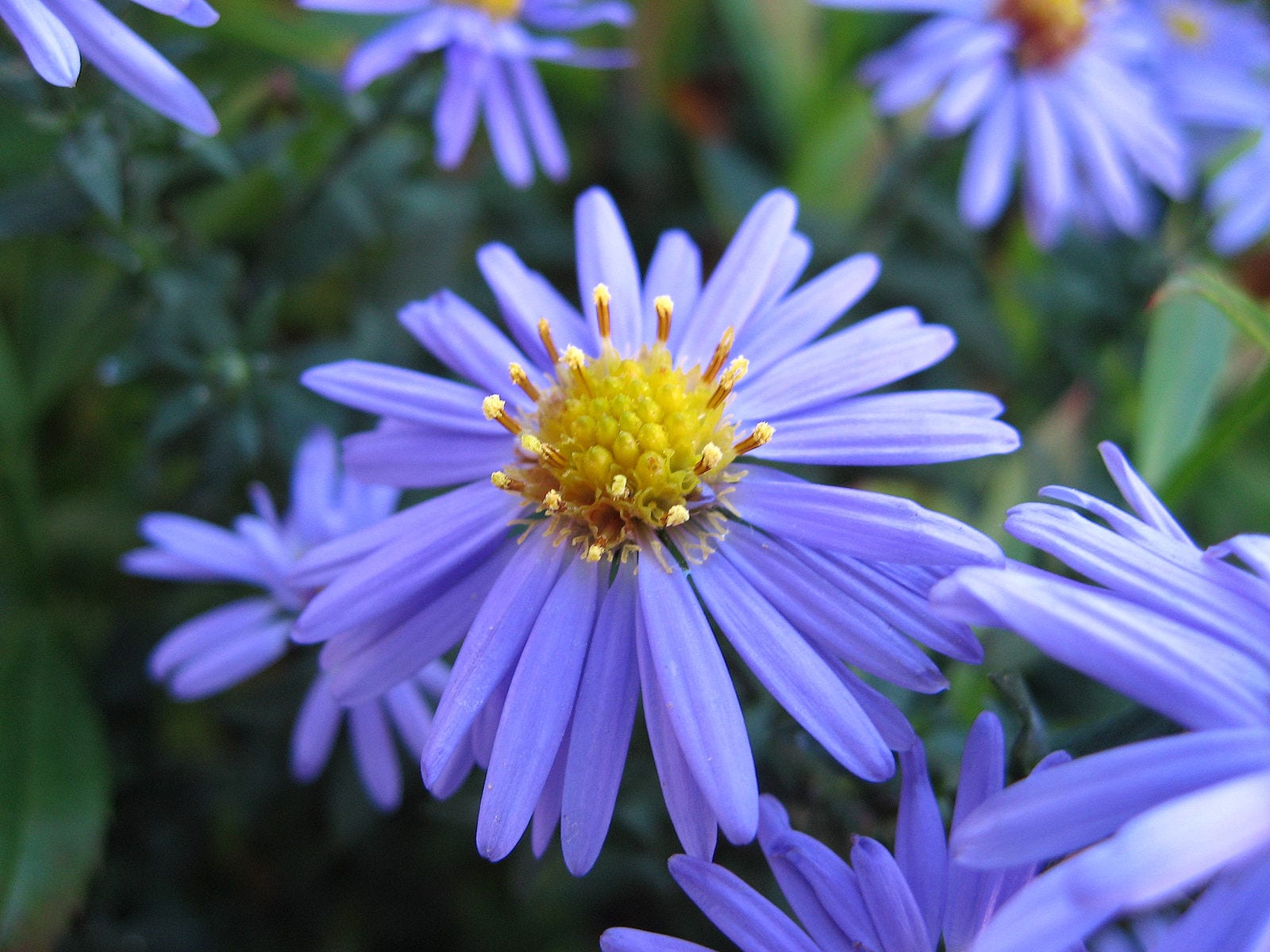
Symphyotrichum laeve Photo: Heike Löchel
Smooth Aster (Symphyotrichum laeve)
There are many Asters to choose from that would perform similar habitat and aesthetic functions within a meadow. Smooth aster distinguishes itself from its cousins because it grows reliably from seed and can easily be identified, even in its seedling stage, because of its smooth distinct leaves. Its flowers are large, light-blue, and can persist from August into November, even surviving the first few frosts of the season. This is a great plant for nectar feeding insects late in the season and many other insects feed on the leaves and stems of this aster. Smooth aster also provides food in the form of leaves and seeds for gamebirds and occasionally is grazed by herbivores when it is young and tender.
Beebalm (Monarda fistulosa)
Clear in its name, beebalm is not only an attractive nectar source to bees and insects, but its purple flowers are stunning to anyone exploring a meadow. In addition to beebalm’s insect population, it is not uncommon to spot hummingbirds feeding on its flowers. These perennial flowers have an average bloom time ranging from late July into August. Moreover, beebalm adds lots of visual interest in the winter when they turn black and silver. Great growth from seed, it creates clusters of flowers that have dense root mats that can withstand even the most significant soil disturbance all while sending up new growth.
About the Author
Pennington Marchael is a landscape contractor based in Brooklyn and Bedford Hills, New York. Throughout his career he has cultivated a deep understanding of horticulture and ecology, which he uses to execute successfully vibrant landscapes. Mr. Marchael has over ten years of experience in project management, landscape construction, and maintenance. In those ten years, he has installed and maintained meadows from Virginia to Northern New York with a total of over one hundred fifty acres installed and many more maintained and monitored. His present focus is growing his business, Pennington Grey, where he aspires to train a new generation of land managers who will lead the landscape industry away from traditional practices and toward a more sustainable and dynamic approach.
***
Each author appearing herein retains original copyright. Right to reproduce or disseminate all material herein, including to Columbia University Library’s CAUSEWAY Project, is otherwise reserved by ELA. Please contact ELA for permission to reprint.
Mention of products is not intended to constitute endorsement. Opinions expressed in this newsletter article do not necessarily represent those of ELA’s directors, staff, or members.

